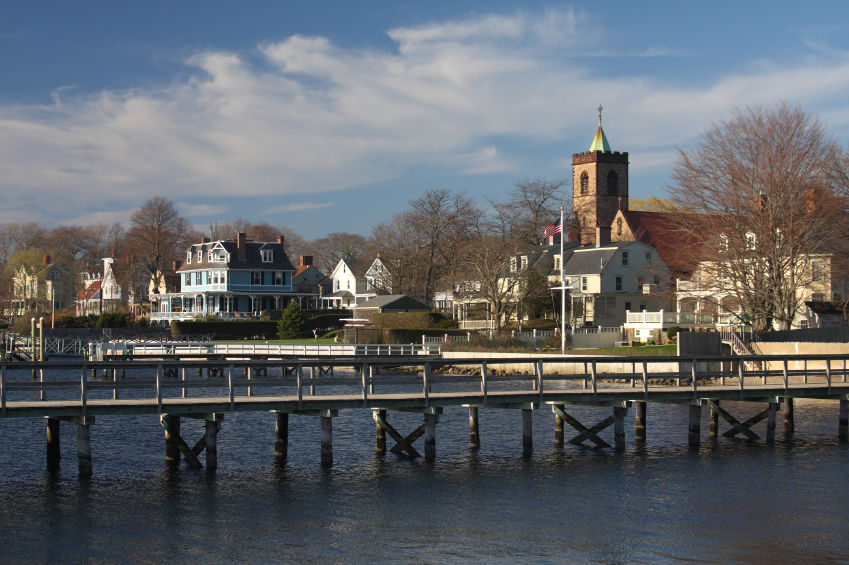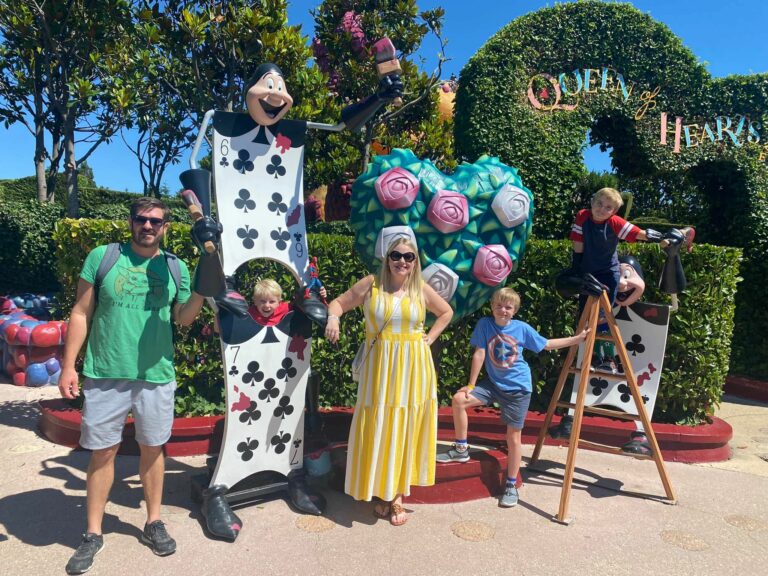
Situated on an island in Narragansett Bay, Newport, Rhode Island, has been attracting visitors to its sheltered harbors and picturesque cliffs since the Gilded Age. The wealthiest residents furnished their lavish Rhode Island mansions with imported marble, fine wood and polished crystal. They gave dinner parties for pets and draped their slumbering horses in satin sheets. They ate off solid gold dishes under glittering Baccarat chandeliers.
The great summer palaces of the Vanderbilts and Astors remain as inviting today as they were more than a century ago—only now you don't have to be among society's New York 400 to get in. Anyone willing to pay the price of admission can enter these "cottages," as the robber barons called their seasonal homes, or tour any of Newport's remarkable collection of impeccably preserved colonial-era buildings.
So take time to appreciate the city's architectural riches, but don't forget to enjoy the things that lured the high-society types to Newport in the first place: ocean breezes, sandy beaches, sumptuous seafood and picturesque lighthouses that dot the rocky New England coastline.
From its rough-and-tumble stint as a Navy town from the 1950s through the early '70s, the redeveloped Newport waterfront has grown into a sophisticated shopping and dining mecca. Today, Newport is a magnet for summer visitors seeking relaxation and recreation as well as a year-round escape for romantics looking for a getaway in a seaside city that boasts of having more bed-and-breakfasts per capita than anywhere else in the U.S.
Although Newport has not hosted the America's Cup yachting race since 1983, the city has not forgotten its nautical roots: It remains a port of call for weekend sailors and giant cruise ships alike, and the downtown wharves are the best place in Rhode Island for chartering a boat or joining a tour group to explore the wonders of Narragansett Bay.
Must See or Do
Sights—The Gilded Age mansions on Bellevue Avenue, particularly The Breakers and Rough Point (home of the late tobacco heiress Doris Duke); Chateau-Sur-Mer; Touro Synagogue and the Loeb Visitors Center; Ocean Drive; sailing tours of Newport Harbor; Fort Adams State Park.
Museums—Museum of Newport History; Newport Art Museum; the International Tennis Hall of Fame; the International Yacht Restoration School; Naval War College Museum; National Museum of American Illustration.
Memorable Meals—Seared Maine diver scallops at the Spiced Pear Restaurant; chicken-fried lobster at Cafe Zelda; award-winning clam chowder at The Black Pearl; lobster sliders and truffled French fries with shaved Parmesan at The Grill at 41 North; an Awful Awful milkshake from Newport Creamery.
Late Night—Toasting the sunset at Fluke Wine Bar; listening to live jazz and blues at the Newport Blues Cafe; drinking with boisterous locals at One Pelham East; dancing with the beautiful people in The Boom Boom Room; rocking out to a cover band at Dockside at Waites Wharf.
Walks—Strolling hand-in-hand along the Cliff Walk; a colonial-, ghost- or rum-themed walking tour; enjoying the sea breezes at Brenton Point State Park; counting species at the Norman Bird Sanctuary; window-shopping along Bannister's Wharf and Bowen's Wharf.
Especially for Kids—Sailing on the harbor; whirling on the carousel at Easton's Beach; wandering through the Green Animals Topiary Garden and Victorian toy museum; learning about sea stars and other fascinating creatures at Save the Bay's Exploration Center and Aquarium; enjoying the lights during Christmas in Newport.
Geography
Newport occupies the southern tip of Aquidneck Island, which sits in the middle of Narragansett Bay. The town's main drags are Bellevue Avenue and Thames Street, each of which runs north-south. Thames Street traverses Newport's historic downtown and harbor areas, ending just a block away from the southern end of Broadway, the city's municipal hub. Bellevue Avenue, a few blocks south and parallel to Thames, runs past many of the city's majestic late-19th-century homes. Ocean Drive intersects the southern end of Bellevue Avenue and heads west along the shoreline.
Aquidneck Island is also home to Middletown (which, aptly, sits in the middle part of the island) and Portsmouth (near the northern tip). Both are easily reached from downtown Newport. Middletown is a 10-minute drive, and Portsmouth is a little more than 15 minutes away.
West across the Newport Bridge from downtown Newport is Conanicut Island and the town of Jamestown, which retains a small-town feel but also has some excellent restaurants along its main street, Narragansett Avenue. Just offshore of downtown Newport is Goat Island, connected by a short auto and pedestrian causeway to the mainland.
History
The town was founded in 1639 by religious dissenters fleeing the intolerant Puritans of Massachusetts Bay Colony. The new residents, who obtained land from the Narragansett tribe, welcomed people of all faiths, including Quakers, Jews and Roman Catholics.
Although the European settlers lived in relative harmony with the local Wampanoag and Narragansett tribes, not all Native Americans were willing to give up their lands quietly. Resistance to the Europeans and disputes over land throughout what is now southern New England led eventually to the bloody conflict known as King Philip's War, 1675-76, which resulted in the near annihilation of the native tribes.
Prosperity came early to the young community, located on the southern tip of Aquidneck Island. Its fine deep-water harbor allowed Newport to develop a lucrative commerce—but one that contemporary residents are not proud of. In what was called the Triangle Trade, Newport traders shipped rum from local distilleries to Africa and exchanged it for slaves. They took the slaves to Caribbean islands and traded them for molasses, which was used to produce more rum.
The Triangle Trade made Newport one of the wealthiest seaports on the East Coast until the American Revolution, when the British occupied Newport for three years and wreaked havoc on the town. Seagoing commerce came to an abrupt halt.
Newport later gained a new claim to fame—as a luxury resort. Rich plantation owners from the U.S. South and the Caribbean began to travel north each year to escape summer humidity and malaria. By the 1850s, a Who's Who of New England intellectuals and artists was making the town a summer colony, establishing Newport as America's first true destination resort. Henry Wadsworth Longfellow summered in Newport, as did Oliver Wendell Holmes, Henry James, John Singer Sargent and—for one season—Edgar Allan Poe. Even the notorious Lizzie Borden spent some time there.
By the early 1900s, New York tycoons and their families, servants and extended households had joined the caravan. These days, visitors flock to Newport to see the historic homes once inhabited by those wealthy residents. Newport's lovely beaches are as popular as ever, and thousands attend Newport's famous jazz and folk festivals, sailing regattas and other events.
Potpourri
Rhode Island quahogs aren't related to pigs: They're the plump, tasty hard-shell clams harvested in Narragansett Bay and served in restaurants throughout the state. By the way, it's pronounced "KO-hog."
In 1772, the HMS Gaspee was sent to Newport by King George III to enforce unpopular trade laws. A group of leading merchants, under the direction of John Brown, led the ship to a sandbar and proceeded to burn it. As a result, the first British troops during the American Revolution were sent to Newport.
Newport hosted the America's Cup yacht race for 53 years, from 1930 to 1983, when Australia II beat Liberty in the "Race of the Century" to claim the cup and the right to host the race. U.S.-based races are now held in California, but Newport retains the moniker "yachting capital of the world."
Ida Lewis, born in Newport in 1842, was keeper of the Lime Rock Lighthouse in Newport harbor from 1879 until her death in 1911. She is credited with rescuing 18 people from drowning during her tenure and was named "The Bravest Woman in America" by the Society of the American Cross of Honor.
If you order a milk shake in Newport you're likely to get a glass of flavored milk; use instead the local vernacular and request a "cabinet."
As a teenager, Jacqueline Bouvier Kennedy Onassis spent her summers in Newport at her family's Hammersmith Farm. She held her wedding reception there in 1953.
Enigmatic heiress Doris Duke was rebuffed when she attempted to donate Rough Point—her seaside estate—to Newport Hospital in the 1960s. The mansion was worth US$1 billion at the time of her death in 1993. She bequeathed the mansion and its wondrous decorative and fine-art collections to the Newport Restoration Foundation, along with another amazing collection she'd amassed: 80 colonial homes in Newport.
Beloved for many years for its Victorian holiday celebrations and living history tours, the Astors' Beechwood Mansion closed its doors to the public in 2010 when it was purchased by billionaire and yachtsman Larry Ellison, co-founder and CEO of Oracle Corporation.
Location
Most cruise ships lay anchor off Goat Island and then ferry passengers to the marine terminal near Perrotti Park in Newport. The terminal is steps away from the Newport Visitors Information Center (23 America's Cup Ave.), which is stocked with brochures and maps and sells tickets to most of the island's tours and attractions.
Most downtown attractions are also within easy walking distance for cruise passengers; transportation is available from the Newport Visitors Information Center to farther-flung destinations.
Shore Excursions
Shore excursions—and their prices—vary according to cruise line. Some may include lunch and drinks, and the number of stops may differ. Among the offerings are mansion visits, a harbor cruise and visit to Rose Island Lighthouse, and a walking tour of Newport's colonial-era landmarks.
Also available are a walking tour of the oceanside Cliff Walk and tour of The Breakers, an exhilarating sailing excursion aboard an America's Cup 12 Meter Yacht, and a Land and Sea-themed driving and boating tour that showcases the city's most picturesque scenes.
Check with your travel agent for additional information.

































